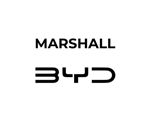One bodyshop owner, who asked to remain anonymous, says: “I laboured under the assumption that BRIC was to be the hard hitting resistance-style movement of the industry. But I am at a loss to recall any direct hits that struck a cord with the common man or shook the establishment.”
But the pressure group says it remains committed to ensuring a fair market for bodyshops and that the comments are coming from one particular bodyshop that it has identified.
“Most of the things we do are not aimed directly at repairers, they are aimed at key people in the insurance companies as they are the people who can affect some change,” says Shaun O’Reilly, BRIC research director.
“We have clear objectives and we have a lot more coming in terms of what we are doing.”
BRIC was criticized by some quarters for asking repairers to prioritize any issues that concern them. The request came from the annual report, but O’Reilly says that this was because the group feels its objectives may be too narrow and it is aiming for a wider transparency across the industry.
The criticism follows BRIC’s complaint to the Advertising Standards Authority (ASA) about adverts from Sheilas’ Wheels, a new brand from Esure. Several repairers asked BRIC to raise the issue of accuracy after the adverts indicated that bodyshops had undergone extra training to ensure they understood the “needs and concerns of women drivers” and that its recommended repairers “are trained to be female friendly”.
However, the ASA found that the announcement of the new venture to Esure’s repairers along with the updating of its standing instructions were sufficient to be deemed as training.
According to a BRIC audit, most repairers who read the new guidelines from Esure regarding female customers found them condescending towards repairers and so routine that they did not even bother to print them out. It found only one repairer who had printed a copy on which training could have been conducted.
“We lost this case but Esure had to change its instructions and implement new mechanisms for training repairers,” says O’Reilly.
“I focused on this issue because repairers asked me to but, obviously, not all repairers are bothered. This one person may think that I’m wasting my time but other bodyshops don’t think so,” he adds.












Login to comment
Comments
No comments have been made yet.